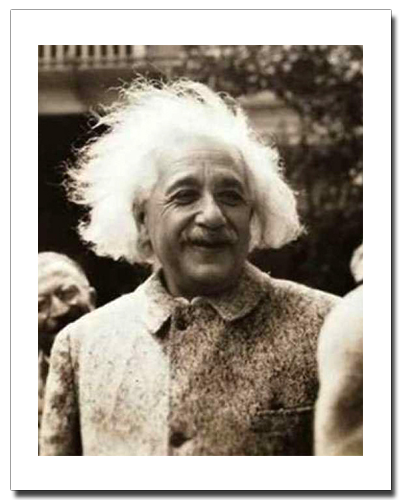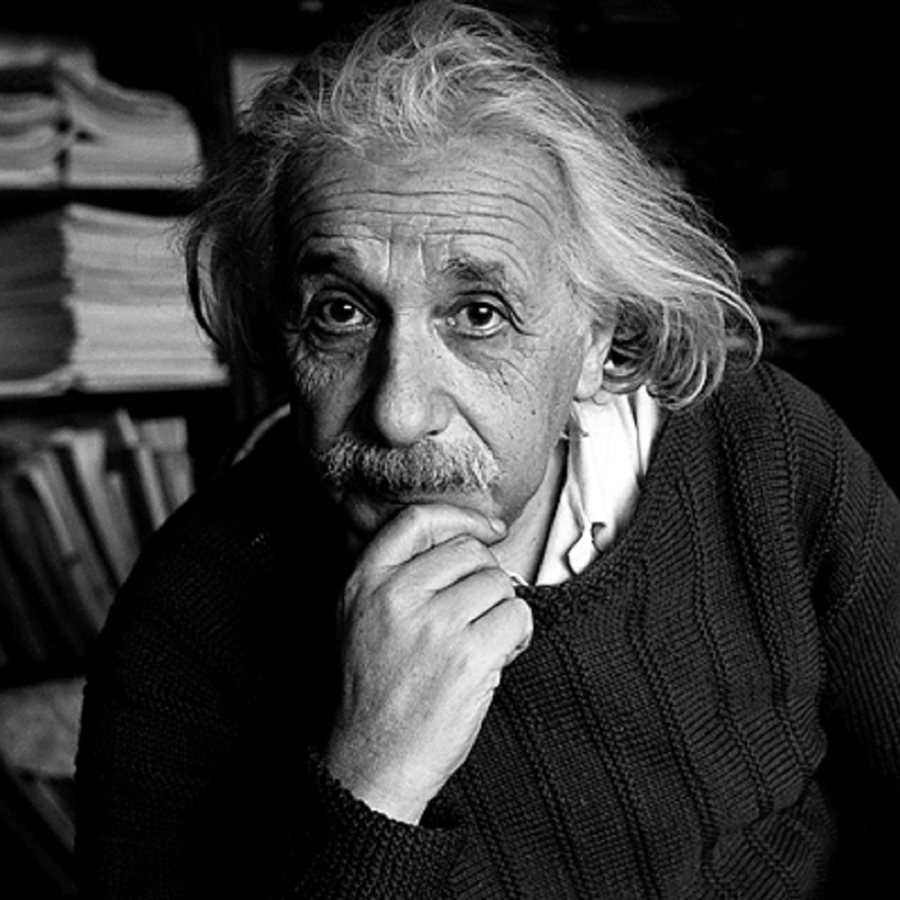
The difference between stupidity and genius
is that genius has its limits.


The Only Source Of Knowledge Is Experience

Albert Einstein
1879 – 1955
Born March 14, 1879, Einstein was a German-born theoretical physicist who developed the theory of relativity, one of the two pillars of modern physics (alongside quantum mechanics) Einstein's work is also known for its influence on the philosophy of science.
Near the beginning of his career, Einstein thought that Newtonian mechanics was no longer enough to reconcile the laws of classical mechanics with the laws of the electromagnetic field. This led him to develop his special theory of relativity during his time at the Swiss Patent Office in Bern (1902–1909), Switzerland. However, he realized that the principle of relativity could also be extended to gravitational fields and—with his subsequent theory of gravitation in 1916—he published a paper on general relativity. He continued to deal with problems of statistical mechanics and quantum theory, which led to his explanations of particle theory and the motion of molecules. He also investigated the thermal properties of light which laid the foundation of the photon theory of light. In 1917, Einstein applied the general theory of relativity to model the large-scale structure of the universe.
Celebrating 100 Years of Einstein's General Theory
A century ago, Albert Einstein published the general theory of relativity, the crowning achievement of the great physicist’s illustrious career. In celebration of this landmark achievement, the Morgan presents a pop-up exhibition featuring a trio of Einstein items.
Theory of Relativity
Einstein's "Zur Elektrodynamik bewegter Körper" ("On the Electrodynamics of Moving Bodies") was received on 30 June 1905 and published 26 September of that same year. It reconciles Maxwell's equations for electricity and magnetism with the laws of mechanics, by introducing major changes to mechanics close to the speed of light. This later became known as Einstein's special theory of relativity. Consequences of this include the time–space frame of a moving body appearing to slow down and contract (in the direction of motion) when measured in the frame of the observer. This paper also argued that the idea of a luminiferous aether—one of the leading theoretical entities in physics at the time—was superfluous. In his paper on mass–energy equivalence, Einstein produced E = mc2 from his special relativity equations. Einstein's 1905 work on relativity remained controversial for many years, but was accepted by leading physicists, starting with Max Planck.
EINSTEIN'S ESTIMATED IQ IS 180
VERY SUPERIOR INTELLIGENCE IQ IS 120 - 140
AVERAGE OR NORMAL IQ IS 90 - 109
Atomic Clock
The atomic clocks in the GPS system are so accurate that they take into account Albert Einstein’s understanding of time, space, and relativity. Because GPS satellites experience less gravity and move at high velocity, their clocks operate at a different rate than those on Earth. Since all the clocks in the system must be synchronized, a net correction of 38 millionths of a second per day must be added to the satellite clocks’ time signals.

Time and Navigation
If you want to know where you are, you need a reliable clock. It might seem surprising, but knowing the accurate time is essential for determining position. Centuries ago navigators at sea relied on chronometers and measurements of celestial objects to know their location. Careful timing of the Earth's rotation allowed navigators to determine their position compared to the Sun, Moon, and stars.
Einstein's Later Life
Throughout the last years of his life, Einstein continued his quest for a unified field theory. Though he published an article on the theory in Scientific American in 1950, it remained unfinished when he died, of an aortic aneurysm, five years later. In the decades following his death, Einstein’s reputation and stature in the world of physics only grew, as physicists began to unravel the mystery of the so-called “strong force” (the missing piece of his unified field theory) and space satellites further verified the principles of his cosmology.
The Nobel Prize in Physics
The Nobel Prize in Physics 1921 was awarded to Albert Einstein "for his services to Theoretical Physics, and especially for his discovery of the law of the photoelectric effect". Albert Einstein received his Nobel Prize one year later, in 1922. During the selection process in 1921, the Nobel Committee for Physics decided that none of the year's nominations met the criteria as outlined in the will of Alfred Nobel. According to the Nobel Foundation's statutes, the Nobel Prize can in such a case be reserved until the following year, and this statute was then applied. Albert Einstein therefore received his Nobel Prize for 1921 one year later, in 1922.

